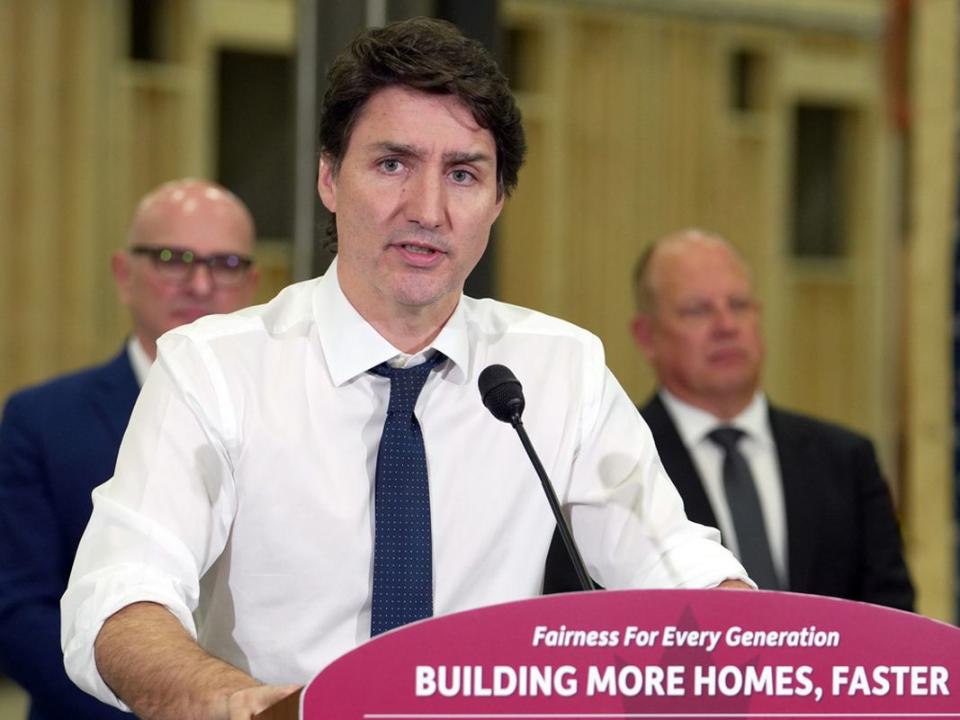10 things to know about the Liberal housing strategy

The Liberals unveiled their national housing strategy last week, calling it “the most comprehensive and ambitious housing plan ever seen in Canada.” Prime Minister Justin Trudeau emphasized a key objective: ensuring no Canadian allocates more than 30 per cent of their income to housing, a goal that hinges on bolstering housing supply to drive prices down. The Financial Post’s Shantaé Campbell breaks down ten things you need to know about the plan.
Targeting 3.9 million homes by 2031
A report by the parliamentary budget officer released this past Thursday estimates that Canada would need to construct 3.1 million homes by 2030 to bridge the housing gap, but the government doesn’t plan to stop there. According to the housing strategy, it is targeting nearly 3.9 million homes by 2031.
Providing an extra $15 billion in loans for apartments
Budget 2024 will propose injecting an extra $15 billion into the Apartment Construction Loan Program. This injection is targeted at constructing a minimum of 30,000 new rental apartments across urban centres, small communities and rural areas. With the boost, the program will be poised to deliver more than 131,000 new apartments by 2032. According to the government of Canada website, this loan program is already actively supporting the development of rental housing by providing builders and developers with low-cost, repayable loans. Since its inception in 2017, the program has facilitated the creation of more than 48,000 new rental homes.
Leasing underused public lands to developers at low cost
This initiative allows developers to lease public lands at reduced costs to construct affordable housing, increasing the availability of such housing options. The government highlighted that the land earmarked for development is currently underutilized. Potential sites could include abandoned industrial parks, locations of defunct government entities and schools with low enrolment.
Investing in new approaches to homebuilding
In a move to customize strategies and foster technological advancements tailored to each region, the budget is expected to propose setting aside $50 million through Canada’s regional development agencies. This funding will support innovative housing projects, particularly those involving modular housing, automation and robotics. According to the government of Canada’s website, Canadian-made solutions such as 3D printing, mass timber construction, and panellized construction are envisioned as integral to the future of homebuilding. These technologies are expected to play a crucial role in addressing the country’s housing needs.
Providing low-interest loans for secondary suites
According to the housing strategy, the budget will introduce the Canada Secondary Suite Loan Program, administered by the Canada Mortgage and Housing Corporation. This initiative will provide homeowners with up to $40,000 in low-interest loans to facilitate the addition of a secondary suite to their homes.
Extending mortgage amortizations to 30 years for newly built homes
In a bid to address generational inequities in the housing market for younger Canadians, Budget 2024 includes a proposal to enhance the Canadian Mortgage Charter. The government intends to revise mortgage insurance regulations to permit 30-year mortgage amortizations for first-time homebuyers purchasing newly constructed homes. This new insured mortgage offering will be accessible to first-time buyers beginning Aug. 1, 2024.
Raising the Home Buyers’ Plan RRSP withdrawal limit to $60,000
While increasing the supply of new homes can help lower prices, the government is also working to facilitate down payments. The Home Buyers’ Plan allows first-time homebuyers to withdraw from their Registered Retirement Savings Plan (RRSP) to buy or construct a qualifying home. Currently, Canadians can withdraw up to $35,000 from their RRSP tax-free for their first home purchase. That limit will be increased to $60,000.
Adding new rules to combat mortgage fraud
Budget 2024 aims to combat mortgage fraud by consulting with the mortgage industry to develop a tool through the Canada Revenue Agency to verify borrower income. This independent verification process will help financial institutions detect and deter fraud and misrepresentation, benefiting all borrowers. The housing plan highlights how criminal organizations and individuals are exploiting the housing crisis through high-value mortgage fraud. This activity harms homeowners and new buyers, artificially inflates demand, and can lead to increased home prices.
Bringing in more skilled tradespeople
If Budget 2024 goes as planned, $50 million will go towards streamlining foreign credential recognition under the The Foreign Credential Recognition program. This will help skilled trades workers join the Canadian labour market without delay. According to the federal government, the program has already assisted over 9,000 skilled newcomers with work placements and wage subsidies. Another 20,000 workers received low-cost loans and support services to minimize costs associated with practising their trade in Canada.
Funding for training and apprenticeships
To address the shortage of skilled workers in the homebuilding sector, the budget is expected to propose a $10 million investment in the Skilled Trades Awareness and Readiness program, targeting high school students to enter the skilled trades. An additional $90 million will be allocated to the Apprenticeship Service to expand apprenticeship opportunities, promoting the training and recruitment of future skilled trades workers.
• Email: shcampbell@postmedia.com
Want to know more about the mortgage market? Read Robert McLister’s new weekly column in the Financial Post for the latest trends and details on financing opportunities you won’t want to miss
Bookmark our website and support our journalism: Don’t miss the business news you need to know — add financialpost.com to your bookmarks and sign up for our newsletters here.

 Yahoo Finance
Yahoo Finance 